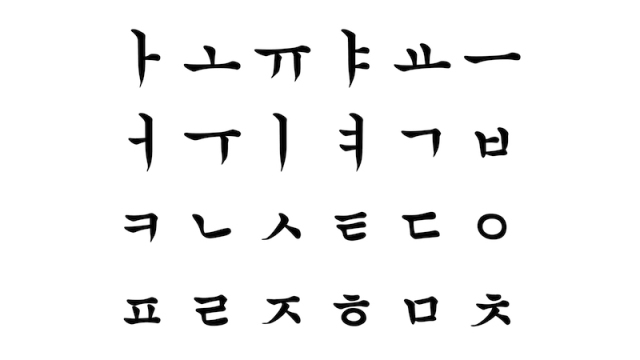It is the official writing system of Korea, both South Korea and North Korea. It is a co-official writing system in the Yanbian Korean Autonomous Prefecture and Changbai Korean Autonomous County in Jilin Province, China. It is also sometimes used to write the Cia-Cia language spoken near the town of Baubau, Indonesia. A Taiwanese linguist Xu Caode (1987) developed and used a modified Hangul alphabet to represent spoken Taiwanese Hokkien, and was later supported by Ang Ui-jin.
The Hangul alphabet originally consisted of 28 letters with 17 consonant letters and 11 vowel letters when it was created. As four became obsolete, modern Hangul consists of a total of 24 letters with 14 consonant letters and 10 vowel letters. In North Korea the total is counted 40. It consists of 19 consonant letters and 21 vowel letters as it additionally includes 5 tense consonants and 6 compound and complex vowel letters.
The Korean letters are written in syllabic blocks with the alphabetic letters arranged in two dimensions. For example, the Korean word for "honeybee" (kkulbeol) is written ??, not ??????. As it combines the features of alphabetic and syllabic writing systems, it has been described as an "alphabetic syllabary" by some linguists. As in traditional Chinese writing, Korean texts were traditionally written top to bottom, right to left, and are occasionally still written this way for stylistic purposes. Today, it is typically written from left to right with spaces between words and western-style punctuation.

